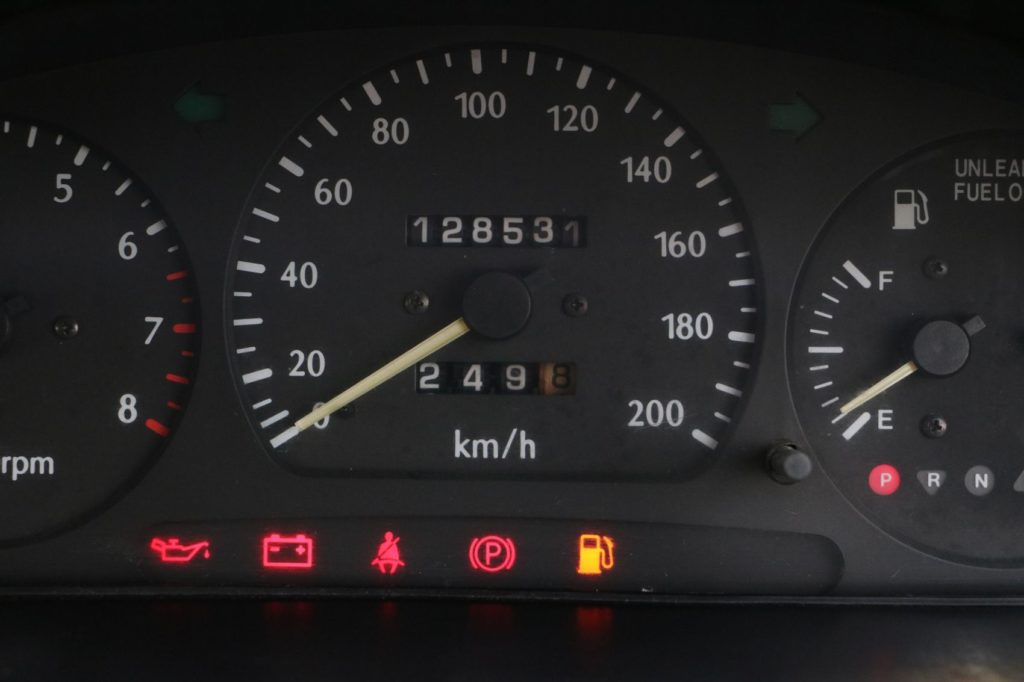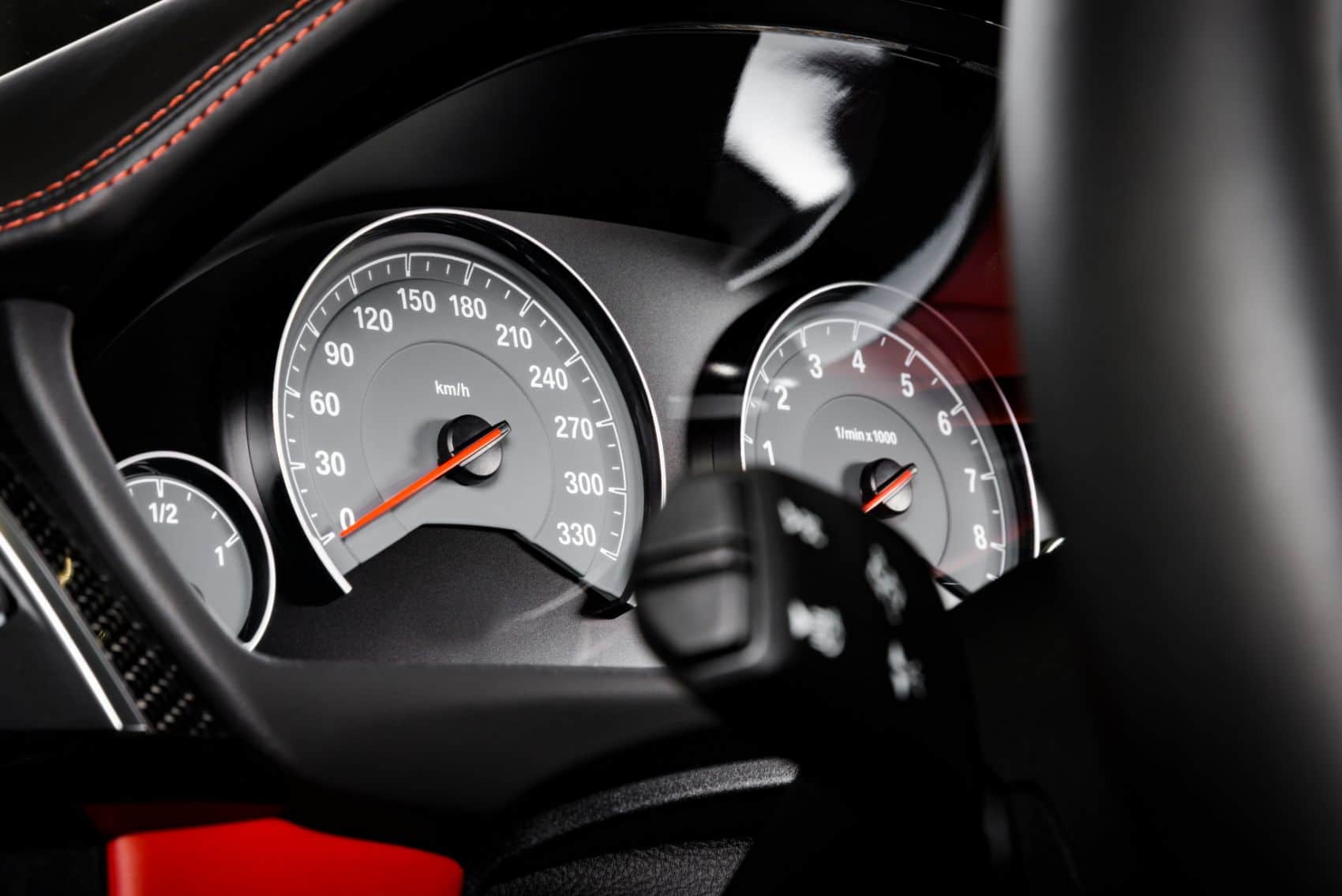What Is Odometer Rollback Fraud?
Also known as “busting miles,” odometer rollback is the act of tampering with a vehicle that results in a mileage reading lower than what it has actually traveled. The primary motivation for odometer rollback and tampering is to increase the sale price of a used car.
Odometer rollback fraud has been a problem ever since manufacturers started placing odometers in their cars. Back in the day, when manufacturers made cars with mechanical odometers, rolling back meant manually changing the number on the device and fitting it back into the dashboard.
The world has gone digital, and cars are no longer using mechanical odometers; nearly all modern cars record mileage electronically now. Unfortunately, scammers have gone digital too. Instead of manually rolling back the vehicle’s odometer, they tamper with the software instead.
The impact of odometer rollback fraud is not cheap either, as the National Highway Traffic Safety Administration (NHTSA) estimates it results in $1.05 billion in losses every year in the United States alone.
How Common Is Odometer Tampering?
According to this NHTSA study (PDF), approximately 452,000 used cars with false odometer readings are sold each year, or 3.47 percent of all used vehicles sold. This means that if you plan to buy a used car, there is around a one in 29 chance you could experience odometer rollback fraud.
No matter if it is an individual selling a car or a dealership, they are obligated by law to inform you with a written document about the exact mileage and any fixes or changes that have been made on the odometer. If caught rolling back the odometer, the scammer can face a criminal charge. The buyer can also sue the scammer.

How To Check For Odometer Rollback
If the vehicle has a mechanical odometer, altering the mileage would mean taking the instrument off the dashboard, disassembling it, and rolling the digit gears back. This is easily detected, as there can be many visual tampering signs.
For digital odometers, the process is vastly different. It usually involves connecting to the car via a diagnostic port, getting access to the odometer software, and altering the software and its stored data. Digital tools that allow for altering odometer readings are not hard to find. Some are professional tools used by licensed repair shops for legitimate reasons. Still, you can find amateur ones for as low as $50 online.
Protect Yourself From Odometer Rollback
Here are five tips to help you avoid buying a vehicle with a rolled-back odometer.
#1: Check For Suspiciously Low Odometer Readings
If your future car’s previous owners are average drivers, they will log approximately 13,500 miles each year. Make sure the model year and odometer make sense compared to one another. For example, if the car is seven years old and the odometer reading is 20,000 miles – much lower than the expected 94,500 average, it can be a red flag. Make sure your seller has a reasonable explanation for it.
Note: These numbers vary per age group, gender, and region. The DOT has an updated chart here that shows the stats.
#2: Ask For The Original Title
The odometer reading is also listed on the vehicle title. To hide the car’s real mileage, other than altering the odometer, scammers might also falsify the vehicle title.
When buying a car, if your seller is reluctant to show you its title, that could be a red flag. Make sure you insist on seeing the original document before agreeing to a purchase. Considering that you might be given an altered or fraudulent title, pay close attention to the document’s odometer reading. Check if the text is crisply printed on a clean background or if it looks smudged and hard to read.
#3: Run a Vehicle History Check
A Vehicle History Report is a document that lists a variety of useful information about the car’s past, including accident history. Every time a car undergoes an inspection or repair by certified companies, that information is added to this report, including the odometer reading at the time of the repair or inspection.
Getting this report is relatively easy. You will need to use the VIN of the car – a unique identifying number found in car documents and physically on the vehicle itself. Next, you can use that number to run a VIN check online.
Unlike the title that can be altered physically, the Vehicle History Report is an electronic document kept in secure databases, making it one of the most reliable ways to check for odometer rollback. An up-to-date vehicle history report will also help you avoid buying a vehicle with a fraudulent title.
#4: Check The Dashboard For Signs of Tampering
If you are buying an older model with a mechanical odometer, pay attention to the physical clues around the dashboard. Here are three tips to follow:
- Check if there are any scratches and signs of disassembly on the dashboard and the odometer itself.
- Check if the instrument panel parts are not fitting correctly and look for any parts or screws that might be missing.
- Take a look at the odometer itself. Do the numbers look misaligned or hard to read? If yes, that is a red flag.

#5: Consult a Trusted Mechanic
If you suspect the mileage is not genuine, ask a professional mechanic to check the car’s internal components. When rolling back the vehicle’s odometer, scammers may forget about the vehicle control module, but mileage is recorded on both devices. The control module is independent of the odometer. Altering one does not necessarily impact the other. One of the sure solutions to detect odometer fraud is checking the control module and comparing it with the odometer. Ask a mechanic to take the data off the module and compare the mileage.
If You Experience Odometer Rollback Fraud
If you have experienced odometer rollback fraud, you should immediately report it to NHTSA. You can find the contact information for the Office of Odometer Fraud Investigation for your state here.
Patrick Peterson is an editor at AutoDetective. Born and raised in the automotive world, he’s a passionate writer who crafts exquisite content pieces about everything related to cars and bikes.


